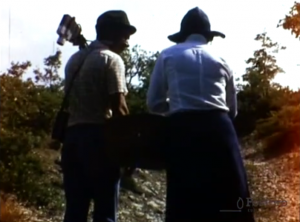
El filme comienza con una mujer lavando sus manos y arreglando su cabello, después pone plantas en una canasta y camina felizmente por un sendero en el que recoge algunas flores. Un hombre (el cineasta) prepara su cámara en medio del campo, cuando de repente ve a la mujer y empieza a filmarla a la distancia. Después de varias tomas, el hombre se acerca a la mujer y habla con ella, para después irse juntos a un lugar más poblado. Cuando el cineasta deja su cámara y equipo en una banca, un grupo de gente sale de un edificio para perseguirlo con palos y horcas.
The film begins with a woman washing her hands and fixing her hair, she then takes some plants and a basket and walks happily through a path where she picks up some flowers. A man (the filmmaker) in the middle of the countryside is preparing his camera, when suddenly he sees the woman and starts making shots from a distance. After several shots the man approaches the woman talks to her and they leave together towards a more populated place. While the filmmaker leaves his camera and equipment on a bench, a group of people step out of a building to chase him with sticks and pitchforks.
"Christmas Nuts, presented with a sound on film recording on a separate 16mm. film, produced by Paul Braun and Howard Goodman, is not only an interior color picture of exceptional beauty and impeccable technical quality but is also one of the best puppet films thus far created. With a camera technique paralleling that of the latest theatrical, animated talkie cartoons, the story of a wolf "hijacking" Santa Claus and the consequent near calamity for the two squirrels is unfolded in a completely cinematic fashion. The camera moves freely from medium shot to closeup, the mechanics of the sets are not obstrusive and the puppets move with agility and grace. The sets, which were designed and constructed with great care, are very handsome and exquisitely finished so that no imperfections are revealed in the enlarged picture of them on the screen. The sets, in combination with the colored lights used in part to illuminate them, embody the producers' theory of "created color." That is, no attempt is made to simulate nature, but rather to produce pleasing, vivid color combinations, as in the illustrations of a child's story book. A cleverly compiled dialog, song and music accompaniment has been synchronized with the picture, although recorded, at present, on a separate film." Movie Makers, Dec. 1935, 534.
"Joseph Fischer's 'Goldilocks And The Three Bears' is an unusual amateur accomplishment in which the filmer and his associates staged the age old nursery tale in miniature, building all the sets, props and the marionette figures themselves. A drawback is the lack of sound narration or continuity titles." American Cinematographer, May 1952, 224.
"Hansel and Gretel, an amateur photoplay version of the fairy tale being produced by Edward J. Hayes, A.C.L., Orange, N.J." Movie Makers, May 1932, 224.
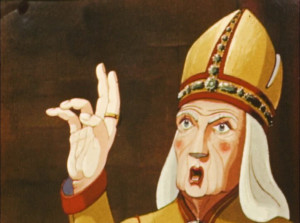
"Émile Gallet, ACL, a man of rare talents and infinite patience, treated us to a showing the other day of his 16mm. color cartoon, The Legend of St. Nicholas, which, with a six year interruption by the war, has been in the making since 1938. Based on an old French folk song of the 12th century, the cartoon relates the fairy tale adventures of three little children, a wicked butcher and kindly St. Nicholas." Movie Makers, Sept. 1949, 327.
"A delightful filming of the nursery story in which mother, daughter, auntie, and the family collie do the parts. Instead of the usual home movies we so often see, the Wolnezs have captured the family on film in a story that will delight all who see it, young and old. This will be blown up to 16mm and included in the Package" PSA Journal, Oct. 1962, 34.
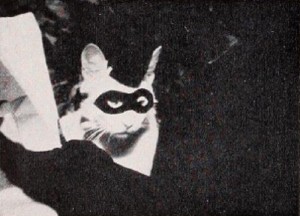
"In The Magic City, Virginia Rodarmor shows a warm and winning appreciation of a child's love for fairy tales. After a delightful opening scene in which Mother pantomimes the end of a bedtime story to her three young ones, we see them being tucked away for the night. The film then pictures the children enacting, in a dream, the tale their mother has just related. A regrettable lack of steady camera support is offset by the sensitive unfolding of the story, keeping it unerringly on a level of pure fantasy. A delightful and characteristic conceit is the sequence in which the witch is transformed into a pure white cat — complete with miniature black mask and peaked hat. The role is played by the family pet with superb and feline aplomb. The Magic City is a rewarding adventure into the difficult realm of motion picture fantasy." Movie Makers, Dec. 1948, 495.
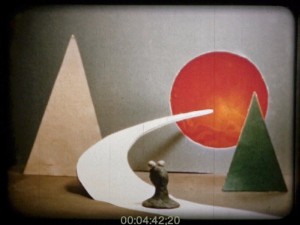
"The imaginative experiments with animated clay figures begun last year in No Credit have, in this year's Proem, proved out as a suave and wholly integrated art form. The unique and wholly delightful work of Leonard Tregillus and Ralph Luce, jr., has here come handsomely of age — both technically and creatively. Proem, conceived as a preface to the theme of Carroll's Through the Looking Glass, is of far greater filmic stature than its already rented status permits it to be rated." Movie Makers, Dec. 1949, 470.
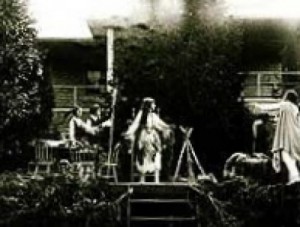
A theatrical-dance version of Snow White performed at the Blue Hill Country Club in coastal Maine.
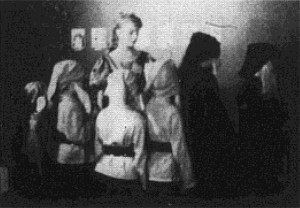
"To film the story made famous by Walt Disney is a major assignment. Snow White, a pretty young miss, did her part exceedingly well. This is very important- she is with us for fifty-two minutes, and we are happy for our visit with her. The Seven Dwarfs are a collection of small fry and here the film had some of the problems of amateur actors. The picture is done to the sound track of Disney's Snow White. A story for young and old and, if we will look beyond some of the little things that could be better, a delightful bit of entertainment for all of us" PSA Journal, Nov. 1960, 40.
Total Pages: 2